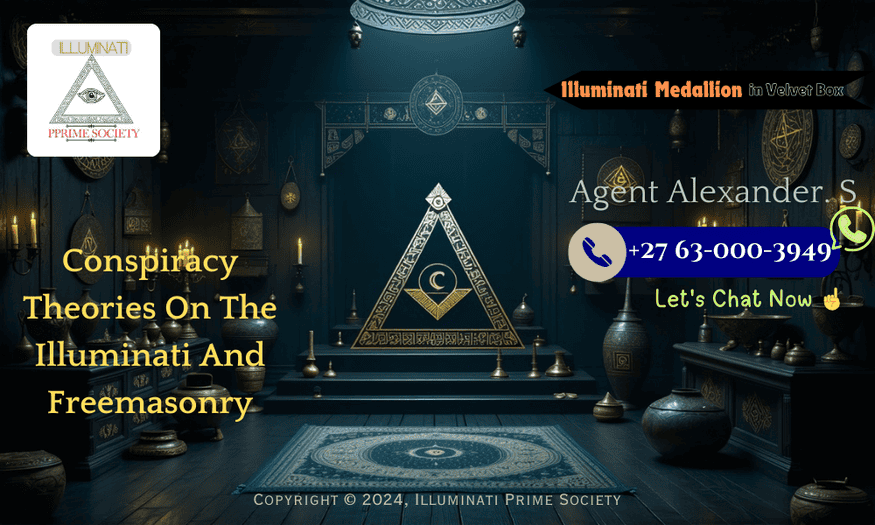Unraveling the mysterious connections between two of history's most secretive societies: the...
Unveiling Conspiracy Theories On The Illuminati And Freemasonry

Diving deep into the enigmatic world of secret societies, this blog uncovers the most intriguing and controversial conspiracy theories surrounding the Illuminati and Freemasonry.
The Origins and History of the Illuminati and Freemasonry
The origins of the Illuminati can be traced back to May 1, 1776, when Adam Weishaupt, a German philosopher and professor, founded the Bavarian Illuminati in Ingolstadt, Germany. The group aimed to promote Enlightenment ideals of reason and secularism, often positioning itself against religious and monarchical control. While the Illuminati officially disbanded in 1785, conspiracy theories suggest that the organization continued to operate in secrecy, influencing global events from the shadows.
Freemasonry, on the other hand, boasts a more ancient lineage, with roots that can be traced back to the medieval stonemason guilds of Europe. Modern Freemasonry emerged in 1717 with the formation of the first Grand Lodge in London. It is a fraternal organization that values moral uprightness, charitable work, and the symbolic teachings drawn from stonemasonry. Both the Illuminati and Freemasonry have been subjects of intrigue and suspicion, often linked together in conspiracy theories due to their secretive natures and perceived influence.
Famous Figures Allegedly Linked to the Illuminati
Over the years, numerous famous individuals have been rumored to be associated with the Illuminati. These figures often span various fields, including politics, entertainment, and business. For instance, former U.S. presidents such as George Washington and Thomas Jefferson have been linked to the Illuminati, despite little historical evidence supporting these claims.
In the realm of entertainment, celebrities like Beyoncé, Jay-Z, and Rihanna have been frequently cited as members of the Illuminati, largely due to their use of symbols and imagery that conspiracy theorists interpret as Illuminati-related. While these claims are often dismissed as baseless, they continue to capture the public's imagination, fueling ongoing speculation and intrigue.
Common Symbols and Rituals: Decoding the Mystery
Symbols play a significant role in the lore of both the Illuminati and Freemasonry. The All-Seeing Eye, often depicted atop a pyramid, is one of the most recognizable symbols associated with the Illuminati. This symbol is said to represent the organization's surveillance over global affairs and its supposed omniscience.
Freemasonry, on the other hand, is rich in symbolic imagery such as the square and compass, the letter 'G,' and the beehive. These symbols are imbued with layers of meaning, often related to moral and ethical lessons. Rituals, too, are an integral part of Freemasonry, with initiation ceremonies and degrees of membership that are shrouded in secrecy. While the exact nature of these rituals remains largely unknown to outsiders, they are believed to be allegorical and educational in nature.
The Influence of Secret Societies in Modern Politics and Entertainment
Conspiracy theories often posit that secret societies like the Illuminati and Freemasonry wield considerable influence over modern politics and entertainment. Some theories suggest that these groups are responsible for orchestrating major geopolitical events, controlling governments, and manipulating financial markets to serve their hidden agendas.
In the entertainment industry, conspiracy theorists claim that the Illuminati uses popular culture as a tool for mind control, embedding subliminal messages in music, films, and television shows. While these theories are largely speculative and lack concrete evidence, they reflect widespread concerns about the concentration of power and the influence of elite groups on societal institutions.
Debunking Myths: Separating Fact from Fiction
It is essential to approach conspiracy theories with a critical and discerning mind. While the idea of secret societies orchestrating world events is fascinating, much of the evidence supporting these claims is anecdotal, speculative, or outright fabricated. Historical records indicate that the Bavarian Illuminati was a short-lived organization with limited influence, and there is little evidence to suggest its continued existence.
Similarly, while Freemasonry is a real and active organization, its activities are far more mundane than conspiracy theories suggest. Freemasons engage in charitable work, community service, and self-improvement, with a focus on symbolic teachings rather than clandestine control. By examining the available evidence and considering the motivations behind conspiracy theories, we can better separate fact from fiction and understand the true nature of these enigmatic groups.
.png?width=100&height=100&name=Illuminati%20Prime%20Society%20Logo%20(1).png)

